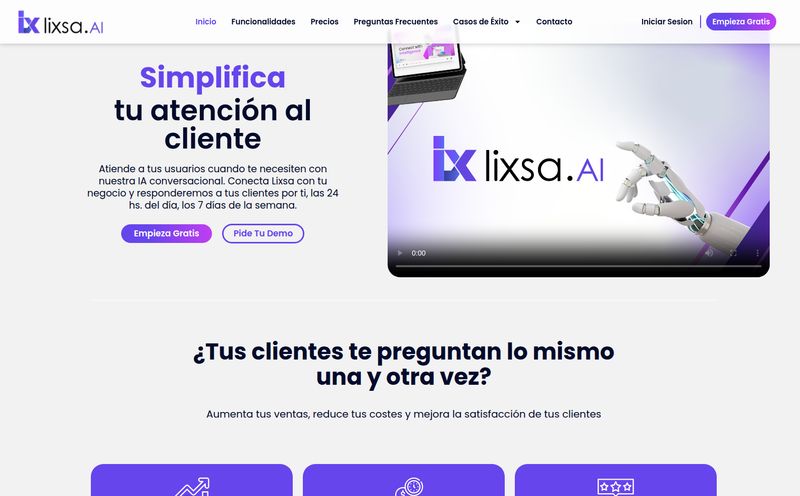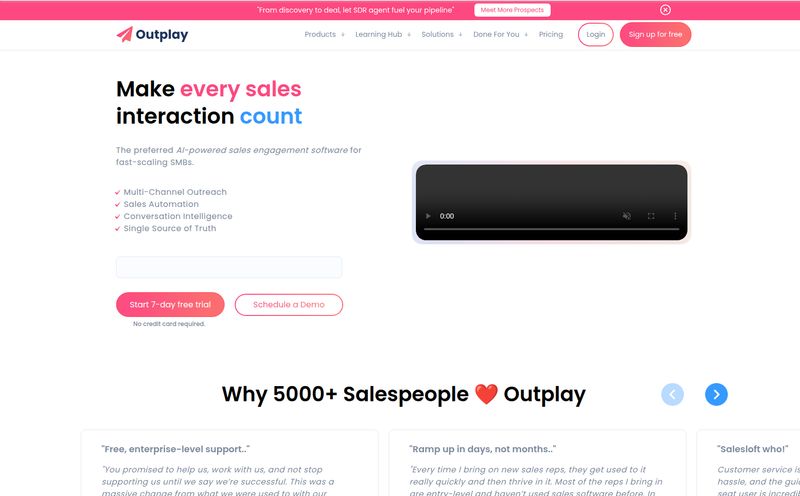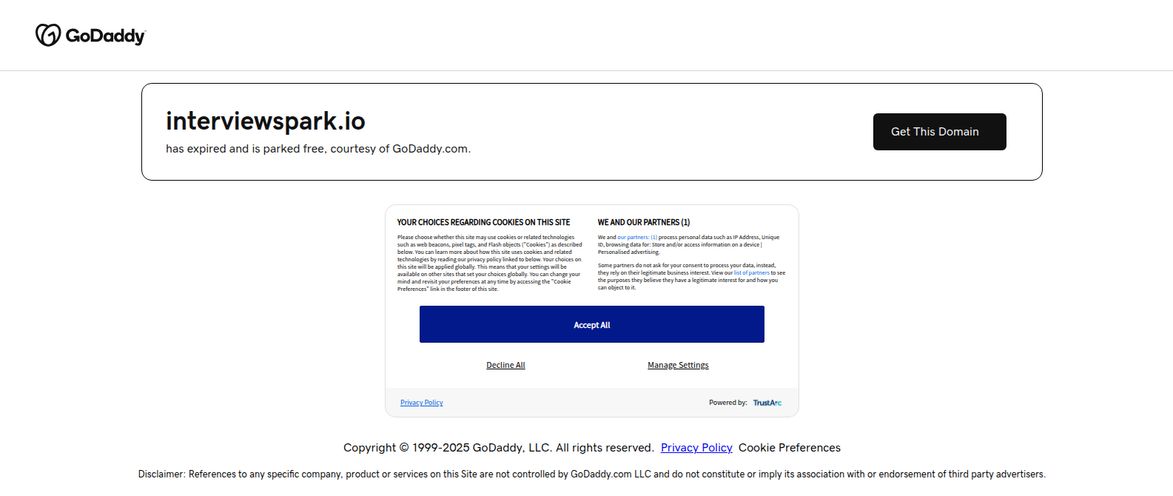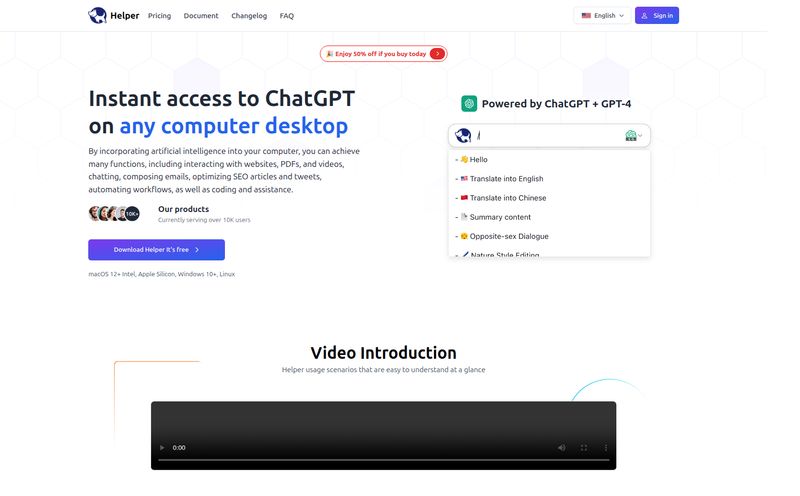Every week there's a new platform promising to be your best friend, your creative partner, or... well, something else entirely. As someone who spends way too much time tracking traffic and trends in the SEO world, I've seen the search volume for terms like "character AI" and "roleplaying AI" just explode. It’s a digital gold rush. So when a name like Tipsy Chat slides across my desk, you bet I'm intrigued.
The name itself is evocative, isn't it? It doesn’t sound like a sterile, corporate-built assistant. It sounds like a dimly-lit bar where interesting stories unfold. A place called an "AI Tavern." And honestly, after a long day of analyzing keyword density, a digital tavern sounds pretty good. So I decided to check it out.
So, What Exactly is This Tipsy Chat Place?
Okay, so the big idea behind Tipsy Chat is that it's an "AI Tavern with Temperature." Forget simple Q&A bots. This platform is built for exploring your imagination, for crafting stories, and for engaging in conversations that you dictate. It’s less of a tool and more of a sandbox.
Think of it like walking into a tavern from a fantasy novel. You don't know who you'll meet. A grizzled warrior? A mischievous elf? A villain with a tragic backstory? The whole point is the potential for discovery, and Tipsy Chat tries to bottle that feeling with a whole lot of filters and options. It’s designed for those of us who want to steer the conversation, not just be a passenger.

Visit Tipsy Chat
Navigating the Tavern Menu: A World of Filters
This is where things get interesting. The platform's real strength, from what I can see, lies in its incredibly granular filtering system. It's not just about finding 'a' character to talk to; it's about finding 'the' character you have in mind. I've seen other platforms try this, but the sheer breadth here is worth talking about.
Finding Your Perfect Conversation Partner
You can get specific. Really specific. The platform lets you filter for interactions based on personality archetypes. We're talking about categories like OC (Original Character), Dominant, Submissive, Fictional, RPG, and more. This tells me it's built by people who understand the roleplaying community. You’re not just getting a generic AI; you’re getting an AI primed for a certain kind of interaction. Plus, you can filter by gender—Female, Male, and Non-binary options are all there, which is a nice, inclusive touch.
Setting the Scene and Theme
Beyond the character, you can also set the entire vibe. The thematic filters are a playground for any creative writer. You can choose from things like Magical, Scenario, Human, Non-human, and even Villain. Want to hash out a plot with a morally grey antagonist in a cyberpunk setting? You can probably dial that right in. This is a massive pro. It cuts down on the tedious setup—that whole "OOC: by the way, you're a space pirate and I'm a sentient plant" dance—and lets you get straight to the good stuff.
The “Temperature” Setting: Let’s Get a Little Nerdy
Okay, this is the part that got the SEO and tech geek in me excited. Tipsy Chat boasts a "Temperature" setting. For anyone who's played around with the backend of models like GPT-4 via an API, that word means something very specific. In the world of Large Language Models (LLMs), temperature controls randomness.
- A low temperature makes the AI's responses more predictable, more focused, and often more repetitive. It sticks to the safest, most probable text.
- A high temperature encourages the AI to take risks. The responses become more creative, more unexpected, and sometimes... completely unhinged.
Giving this control to the user is a brilliant move. It lets you decide if you want a straightforward, coherent storyline or a wild, chaotic brainstorming session. Want your brooding vampire to stick to the script? Turn the temp down. Want him to suddenly develop a passion for knitting? Crank it up and see what happens. This single feature puts a lot of creative power back in your hands.
The Potential Hiccups (And My Two Cents)
No platform is perfect, right? One of the potential cons is that with so many filters, you might get lost in the weeds trying to find the perfect combo. It could be a bit of a paradox of choice situation. Sometimes you just want to jump in, and too many options can be a hurdle.
The other, more significant issue, is that at the end of the day, the quality of the chat hangs on the quality of the underlying AI model. The platform can have the best interface in the world, but if the AI it uses is a bit dumb or overly repetitive, the experience will fall flat. The magic is only as good as the magician's tools. I've always felt that the best AI interactions come from a partnership between a great model and a user who knows how to write a good prompt. This will likely be no different.
What’s the Damage? A Look at the Pricing
So, how much does a drink at this AI tavern cost? Well, that's the mystery. As of right now, I couldn't find any pricing information. The page where you'd expect to see subscription tiers or credit packs... well, it was a 404 error.
Honestly, I find that kinda funny. Maybe it's in a soft launch, or maybe its so exclusive the bouncer hasn't opened the doors to the public yet. It could be a freemium model, a one-time purchase, or fully subscription-based. For now, your guess is as good as mine. We’ll have to keep an eye on it.
Who is Tipsy Chat Really For?
I think this platform has a pretty clear audience. It's not for people who want to ask an AI for a dinner recipe. It's for the creators. The roleplayers, the fanfiction writers, the D&D dungeon masters looking for inspiration, and anyone who feels limited by the rigid guardrails of other character chatbots. It’s for people who see conversation as a creative act. If you're someone who enjoys building worlds and exploring personalities, this seems like it could be a fantastic tool for your arsenal.
Frequently Asked Questions about Tipsy Chat
What is Tipsy Chat in a nutshell?
Tipsy Chat is an AI chat platform described as an "AI Tavern." It's designed for imaginative and roleplaying conversations, featuring a huge array of filters for characters, themes, and scenarios.
How does the 'temperature' setting likely work?
Based on standard AI terminology, the temperature setting probably controls the AI's creativity. A low temperature provides more predictable and focused responses, while a high temperature generates more random, unexpected, and potentially chaotic results.
Is Tipsy Chat free to use?
Currently, there is no public information on pricing. The official pricing page wasn't available during our review, so it might be free during a beta phase, or pricing details have not yet been announced.
What kind of chats can I have on the platform?
Pretty much anything you can imagine, thanks to the filters. You can create interactions based on RPGs, specific scenarios, talk to villains, non-humans, or original characters. The platform is built to support a wide range of creative and fictional conversations.
Is it better than other AI chat platforms?
That's subjective. Its strength appears to be its deep customization and the user-controlled "temperature" setting. If you value creative control and specific roleplaying scenarios over a general-purpose chatbot, it might be a better fit for you. The overall quality will still depend heavily on its core AI model.
Final Thoughts from the Bartender
So, should you pull up a stool at Tipsy Chat? I'd say it's worth keeping on your radar. The concept of an "AI Tavern" combined with granular controls and that all-important temperature setting is genuinely compelling. It shows a deep understanding of what creative users actually want from a platform like this.
Sure, there are unknowns—the quality of the core AI, the final pricing model, the slight jank of a 404 page. But the foundation is solid. It’s a promising new spot in the ever-growing neighborhood of conversational AI. I, for one, will be checking back in to see how it develops. Cheers to that.
Reference and Sources
- Initial platform data provided by Tipsy Chat's preliminary feature list.
- For more on AI Temperature: How to Sample from Language Models - Towards Data Science.



